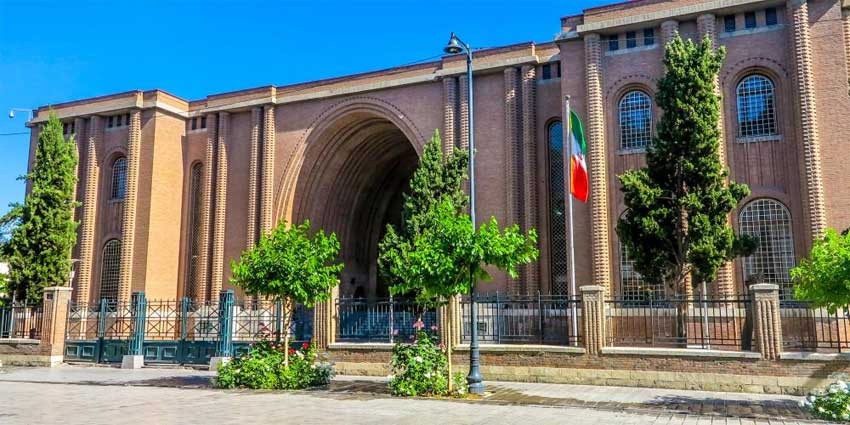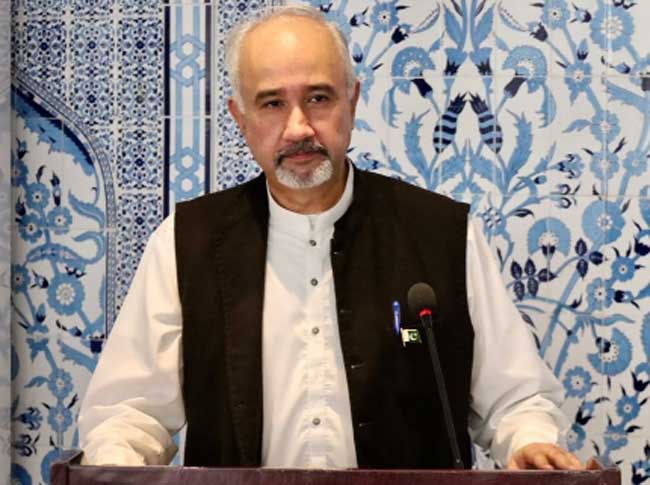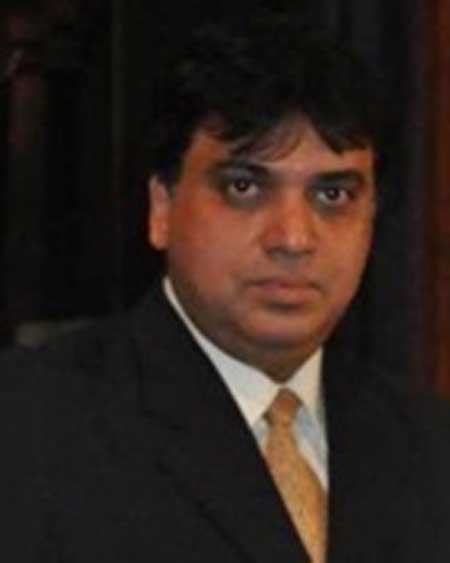
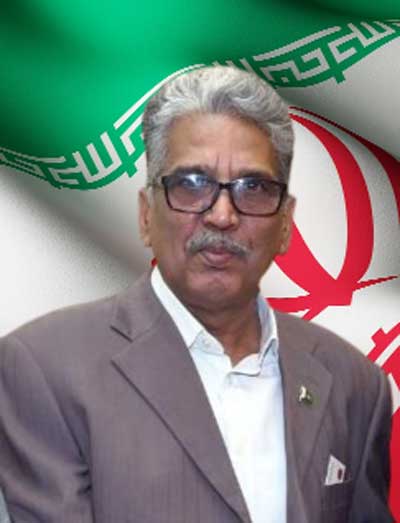
On Monday after the visit of IRNA our second visit was for the National Museum of Iran, a cultural beacon in the heart of Tehran, is a testament to the rich and diverse heritage of this ancient nation. We witnessed to this remarkable institution, where history comes alive through awe-inspiring artifacts and exhibitions. Like a time machine, the museum transports visitors back in time, connecting them to the legacy of Persia and offering profound insights into Iran’s roots.
Exploring Iran’s Rich Heritage at the National Museum of Iran
The National Museum of Iran, also known as “Iran Bastan Museum,” stands as a testament to the rich and diverse history of Iran. Covering an expansive area of 2,744 square meters, this museum is a treasure trove of artifacts that spans millennia, from the 6th millennium BC to the Islamic era. Established in the years 1935 to 1937, it holds the distinction of being Iran’s first scientific museum.
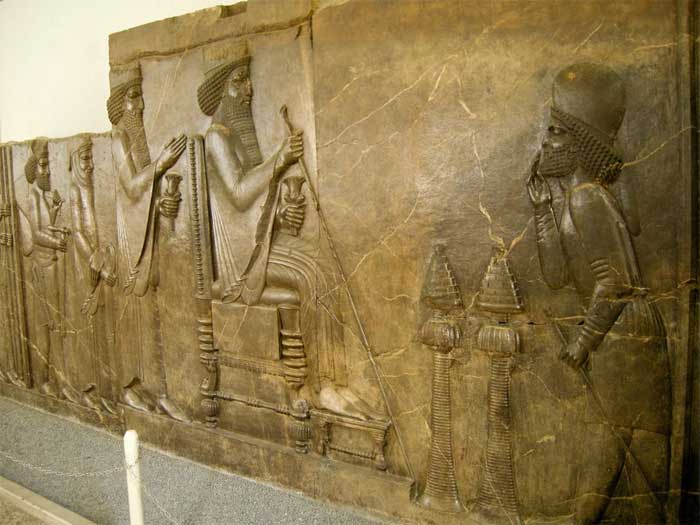
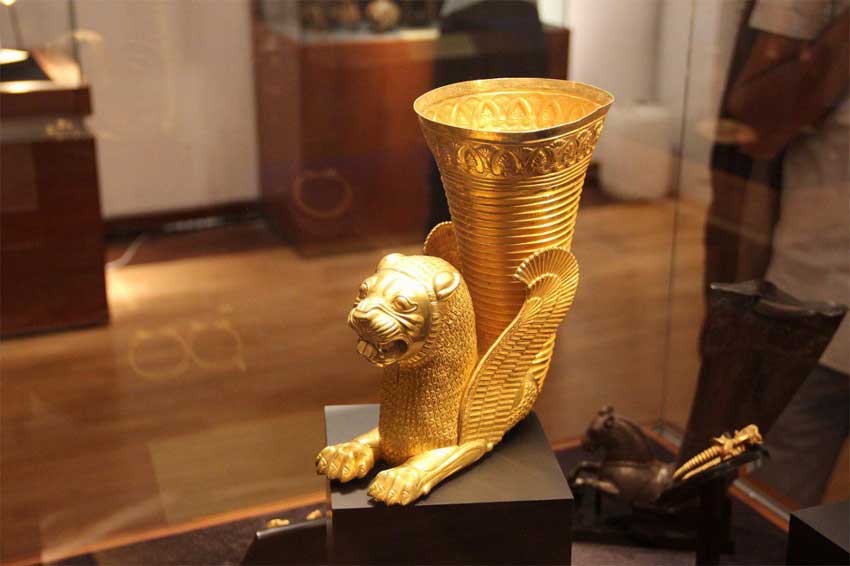
The first floor of the National Museum of Iran is a journey through time, with an impressive collection of pre-historical and historical relics on display. These artifacts provide a glimpse into Iran’s ancient past, showcasing the evolution of its civilization and culture.
As you ascend to the second floor, you step into the Islamic era, where remnants from this transformative period are carefully preserved. The exhibits shed light on the art, architecture, and history of the Islamic dynasties that once ruled over this land.
However, history hasn’t always been kind to this venerable institution. The museum underwent a period of closure for essential repairs until 1987 when it was reintroduced to the public as the “National Museum of Iran.” Since then, it has continued to serve as a beacon of Iran’s historical legacy.
One of the museum’s crown jewels is its collection of Qurans, dating from the 3rd to the 13th century AH (Islamic calendar). These sacred texts provide valuable insights into the development of Islamic calligraphy and illumination over the centuries.
Another highlight is a collection of 61 gold coins from the Samanid and Al-e-Buyeh eras, as well as a diverse assortment of silver coins belonging to the Samanid, Al-e-Buyeh, and Qaznavi periods. These coins provide tangible connections to Iran’s economic history and the prosperity of various dynasties.
Beyond its artifacts, the National Museum of Iran also boasts a rich collection of books and publications in various languages. These resources cover a wide range of topics, including Iranian art, archaeology, history, and literature related to neighboring countries. Visitors with a thirst for knowledge can explore these texts to gain a deeper understanding of Iran’s cultural heritage.
The National Museum of Iran, also known as “Iran Bastan Museum,” stands as a testament to Iran’s rich and diverse history. Its extensive collection of artifacts and resources serves as a bridge connecting the present to the past, offering visitors a unique opportunity to explore the cultural tapestry of this ancient and storied land. As you wander through its halls, you can’t help but be awed by the centuries of history that have shaped Iran’s identity, making this museum an essential stop for anyone seeking to delve into the heart of this remarkable nation.
A Treasure Trove of Stories and Artifacts
The journey into the National Museum of Iran begins with a sense of anticipation, as visitors step through its grand entrance. The museum’s historical significance is palpable, as it houses millennia-old relics that whisper tales of ancient civilizations. It became a treasure trove of stories and artifacts, a place to chronicle Iran’s captivating past.
The Halls of Time
As one ventures deeper into the museum’s halls, a rich tapestry of history unfolds. The artifacts on display span centuries, showcasing the evolution of Persian culture and civilization. Among the treasures are ancient pottery pieces, each telling a story of craftsmanship and artistic prowess that thrived in ancient Iran. Exquisite jewelry, intricately designed and adorned with gemstones, bear witness to the mastery of ancient Persian goldsmiths.
The sculptures, often monumental in size, stand as silent guardians of Iran’s past. These majestic artworks are a testament to the artistic achievements of the various dynasties that once ruled this land. Each sculpture seems to beckon visitors to uncover the secrets of a bygone era.
Intricately woven carpets, a hallmark of Persian craftsmanship, line the floors of some exhibition halls. These carpets, with their vibrant colors and intricate patterns, are more than just decorations; they are a reflection of the artistry and skill that has been passed down through generations.
Delving into Iran’s Rich History
The National Museum of Iran serves as a bridge between the present and the past, allowing visitors to delve deep into Iran’s rich history. The exhibits are not mere collections of artifacts but immersive experiences that transport visitors to different eras. Walking through the halls, one can’t help but feel a profound connection to the legacy of Persia.
From the first Persian Empire under Cyrus the Great to the Islamic conquests and beyond, the museum traces the nation’s journey through the ages. It sheds light on the influence of Zoroastrianism, the birth of Islam, and the merging of diverse cultures that have shaped modern Iran. It’s a journey that connects the dots of history and helps visitors understand the complexities and nuances of this ancient land.
Preserving Iran’s Cultural Heritage
The National Museum of Iran plays a vital role as the custodian of Iran’s cultural heritage. In a world where history can easily be forgotten, this institution stands as a guardian, preserving the stories and artifacts that define Iran’s identity. Its efforts in curating, conserving, and displaying these treasures are essential in ensuring that future generations can connect with their roots.
A Must-Visit Destination
For history enthusiasts and curious explorers alike, the National Museum of Iran is a must-visit destination. Its educational exhibits offer a glimpse into the ancient civilizations that have shaped the nation, and its immersive displays make history come alive. The museum allows visitors to walk in the footsteps of Persian kings, scholars, and artisans, offering a profound understanding of Iran’s rich and diverse heritage.
The National Museum of Iran is not just a place to see ancient artifacts; it’s a place to experience history. It’s where the past comes alive, where the whispers of ancient civilizations can be heard, and where the legacy of Persia is on full display. A visit to this remarkable institution is a journey through millennia, a chance to connect with the roots of a nation, and a reminder of the importance of preserving cultural heritage for future generations.
At the conclusion of our visit to the museum, Ms. Firouzeh Nameh, the Museum Manager, graciously bid us farewell and gifted informative materials about the museum.

The Museum of Islamic Archaeology and Art
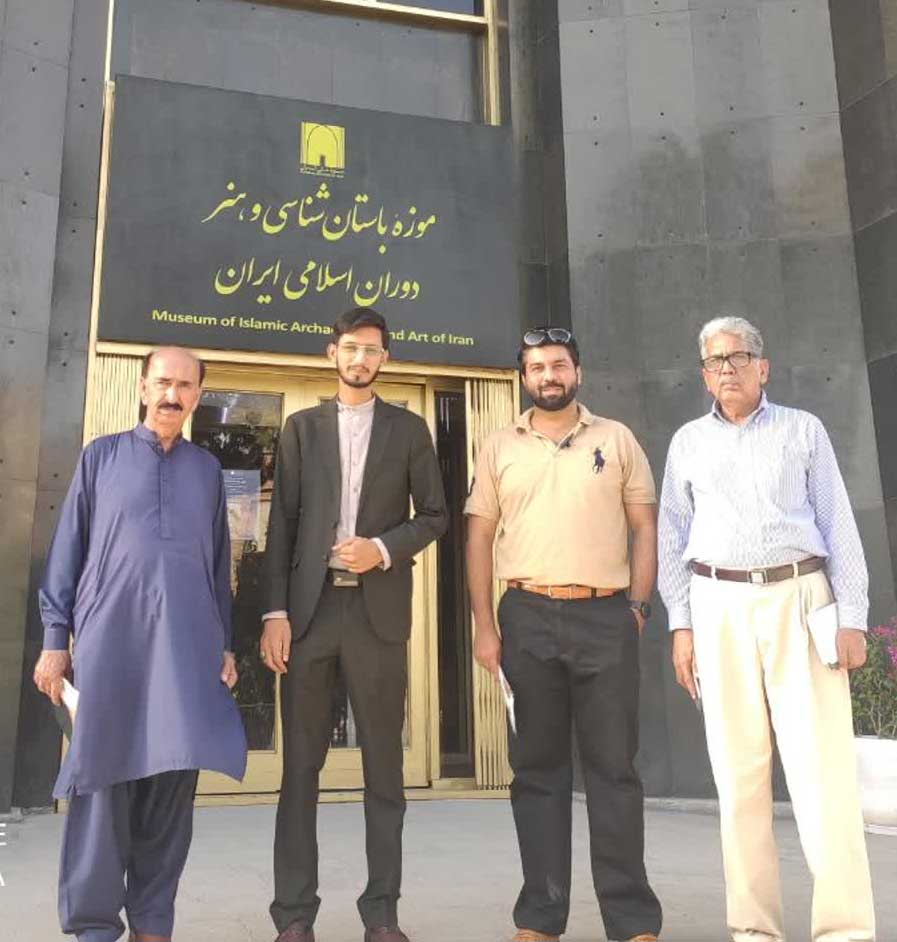
As we embarked on our visit through the cultural tapestry of Iran, the Museum of Islamic Archaeology and Art of Iran stood as a beacon of artistic brilliance. Nestled close to the National Museum of Iran in the heart of Tehran, this institution unveiled itself as a treasury of cultural wonders.
The Museum of Islamic Archaeology and Art is a testament to Iran’s rich artistic and architectural heritage during the Islamic era. My visit to this magnificent establishment was nothing short of a spiritual experience, offering a glimpse into the intricate tapestry of Islamic civilization.
From the moment I entered, I was entranced by the museum’s grandeur. The architecture itself was a work of art, seamlessly blending modern design with traditional Persian elements. As I stepped into its hallowed halls, I was transported to a different time, a bygone era when Islamic art flourished.
The museum’s collection was nothing short of awe-inspiring. Each gallery was a trove of cultural treasures, meticulously curated to represent the artistic mastery and spiritual devotion of Islamic civilization. The vibrant colors of Persian rugs and textiles, adorned with intricate geometric patterns and calligraphy, were a testament to the meticulous craftsmanship of artisans from centuries past.
One of the highlights of my visit was the breathtaking calligraphy on display. Islamic calligraphy is an art form that transcends mere words; it is a spiritual expression that reflects the beauty of the Arabic script. The museum’s collection showcased calligraphy from various periods and styles, each piece a masterpiece in its own right.
The delicate ceramics on display were another source of fascination. Persian ceramics are renowned for their intricate designs and vibrant colors, and the museum’s collection did not disappoint. From ornate dishes to intricately patterned tiles, I marveled at the skill and artistry that went into creating these exquisite pieces.
In the section dedicated to metalwork, I was greeted by a dazzling array of artifacts. The intricate metalwork, including ornate lamps, jewelry, and weapons, spoke of a time when craftsmanship knew no bounds. Each piece was a testament to the meticulous attention to detail that defined Islamic art.
As I wandered through the galleries, I couldn’t help but feel a deep sense of connection with the past. The Museum of Islamic Archaeology and Art allowed me to explore the cultural, artistic, and historical heritage of Iran in a profound and meaningful way. It was a journey through time, a chance to witness the legacy of Islamic civilization and its enduring impact on art and culture.
In documenting my visit to this extraordinary museum in my diary, I aimed to capture the profound beauty and historical significance of the artifacts I encountered. I wanted to ensure that the enchantment of the Museum of Islamic Archaeology and Art would live on for generations to come. It is a place where the past and the present converge, where the spirit of Islamic art continues to inspire and captivate all who have the privilege to visit.
As I closed my diary entry for the day, I couldn’t help but reflect on the importance of preserving and celebrating such cultural treasures. The Museum of Islamic Archaeology and Art is a testament to the enduring legacy of Islamic civilization, a reminder that art and culture have the power to transcend time and connect us to our shared heritage. It is a place that deserves to be cherished and protected, ensuring that its enchantment endures for generations to come.
You can now immerse yourself in Mr. Nazir Leghari’s thoughts and feelings about visiting museums in English.
The National Wonders House of Tehran and the Museum of the Islamic Era are situated in two separate buildings within the same vicinity. Between these two buildings, there is a souvenir shop. This shop contains replicas of all the objects, artifacts, utensils, books, sculptures, tools, and inscriptions that we have just seen. The souvenir shop is staffed by five successful saleswomen. I am delighted by their knowledge and study. They appear to be experts in ancient artifacts. They explain to us the history of these objects and inscriptions and the conditions of their era. They regard us as seekers of knowledge and converse with us like scholars. I admire their approach. We enter the Islamic Era section of the museum through this souvenir shop.
The museum building covers an area of four thousand square meters. You can think of the building’s area as roughly equivalent to one acre. This building was inspired by the Hashemite Palace of Bishapur. Construction of this building began in 1940 and took ten years to complete, so it was finished in 1950. Initially, this building was used for temporary exhibitions and as a museum of natural wonders. Later, in 1996, it was given permanent status as the Museum of the Islamic Era. Then, in 2006, it underwent decoration and renovation, and it was reopened to the general public in 2015.
We enter the museum. Mohammad Reza Shabani accompanies us to the Quran Hall. From here, to the right is the Timurid Hall, and to the left are three other halls. These three halls represent the history of the Qajar Dynasty, while the Timurid Hall is dedicated to the history of the Safavid era.
When you enter the Quran Hall, you can feel the gleam of gold. Quranic verses are written in the early Kufic script, showcasing the beauty of Quranic verses in its prime. This hall not only contains Quranic manuscripts but also books on scientific, scholarly, historical, and literary topics. Here, you can find samples of paintings, calligraphy from ancient times, and various colors of illuminations. There are also instruments for medicine and astronomical devices. Additional lighting devices are available for viewing all these items.
You can also see utensils and tiles made of metal here. This wonders museum mainly represents the history of three Iranian dynasties. The Timurid dynasty started in 1370 and ended in 1507. Reza Shabani tells us that during the Timurid era, the Iranian empire extended to Iran, Iraq, Afghanistan, and Central Asia. Western Asia, Eastern Europe, Pakistan, Armenia, Georgia, Azerbaijan, Northern India, Turkey, and Mongolia were also part of the Timurid dynasty’s territory. The capital was initially established in Samarkand, later moved to Herat.
We are told that the first ruler of the Timurid dynasty was Amir Timur Gurkani, who ruled for 35 years, starting in 1370. His era, known as the Timurid dynasty, lasted until 1405 when it continued under his name. The second ruler of this dynasty was Badi’ al-Jamal, who was Amir Timur’s grandson. Badi’ al-Zaman’s reign lasted only one year, as he ascended the throne in 1406 and was embroiled in internal conflicts and battles in the following year.
The Safavid dynasty of Iran was founded in 1501 and lasted for over two centuries until 1736. The first ruler of the Safavid dynasty was Shah Ismail, who ruled from 1501 to 1524. The second ruler, Tahmasp, ruled for 52 years from 1524 to 1576. Ismail II only ruled for two years from 1576 to 1578. During the Safavid rulers’ reign, Iran held sway over the entire Middle East, Central Asia, Eastern Europe, Anatolia, the Persian Gulf, and Mesopotamia.
The Qajar dynasty of Iran was established in 1789 and lasted until 1909. Agha Mohammad Shah was its founder, and seven Qajar kings ruled Iran and neighboring lands. The names of these kings were Fath Ali Shah Qajar, Mohammad Shah Qajar, Naser al-Din Shah Qajar, Mozaffar al-Din Shah Qajar, Mohammad Ali Shah Qajar, and the seventh and last king, Ahmad Shah Qajar.
We find symbols and signs of the ruling dynasties mentioned above in the wonders of Iran’s Islamic era. We are amazed by the calligraphy of Quranic verses carved on stones. Even the golden doors in the wonders of the house leave us astonished. On one side, the bronze peacock leaves us mesmerized. The peacock has spread its feathers, and it is gazing intently and with fascination at something. Several mihrabs catch our attention, and the intricate designs on the mihrabs are highly captivating.
In one of the mihrabs, the use of indigo blue reminds us of the connection between Multan and Iran, and we begin to contemplate the beauty of the deep blue and its association with both places. In our hearts, we express our gratitude to the honorable manager of Iran’s National Museum, Ms. Firouzeh Nameh, who guided us through the Islamic era museum. We haven’t tired of seeing the wonders of the house of wonders, but now we must leave. Raza Shabani informs us that we are going to see the Azadi Tower.



